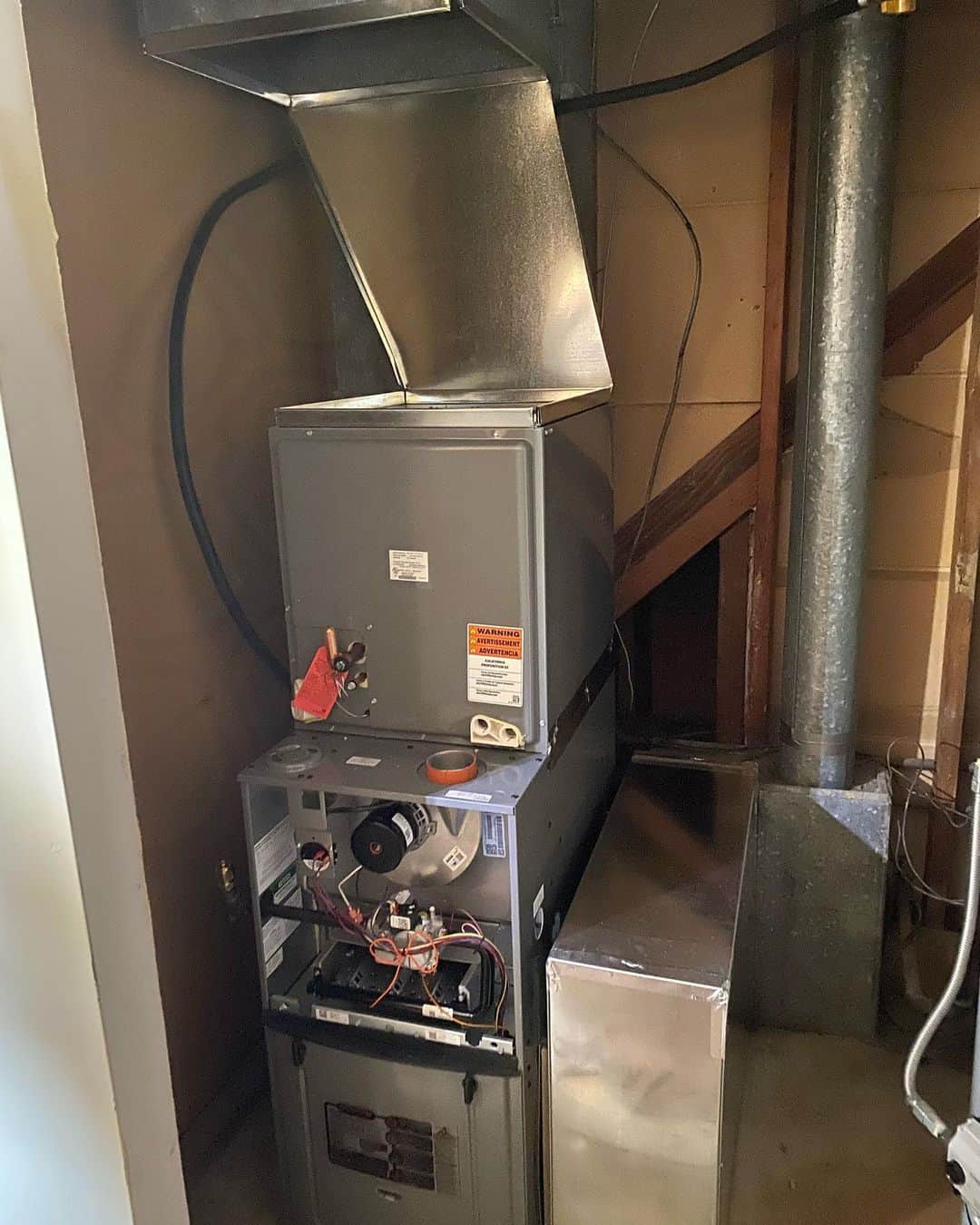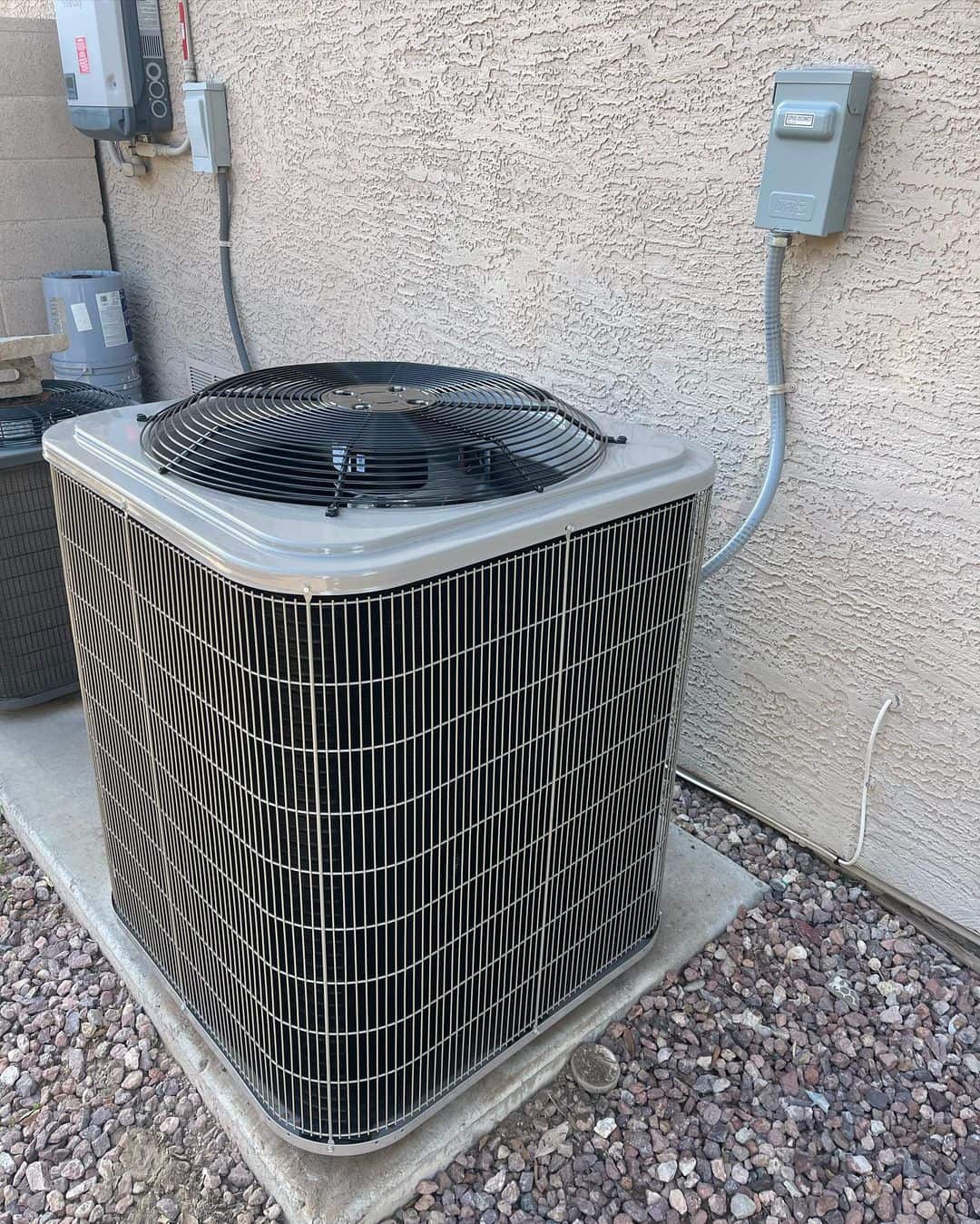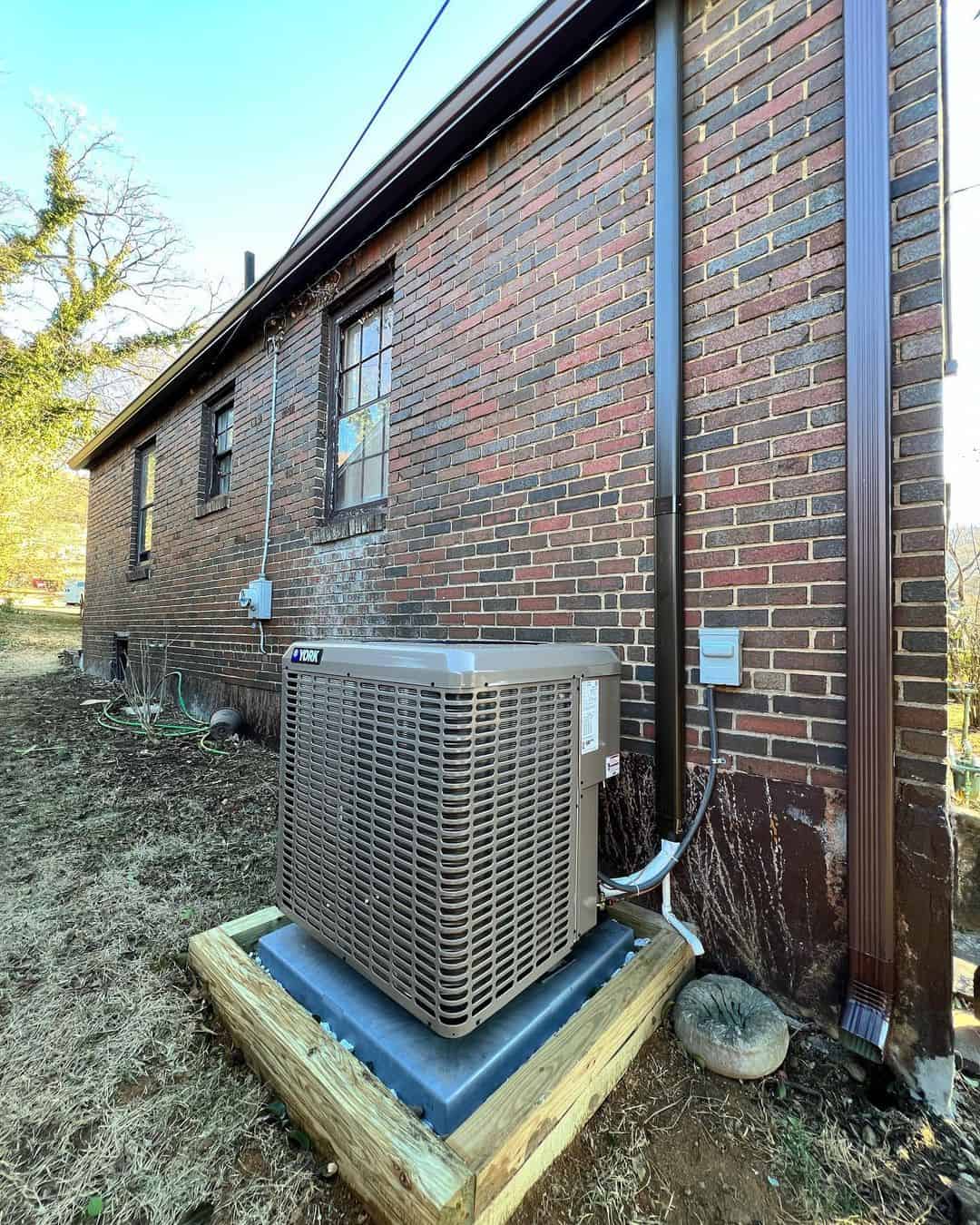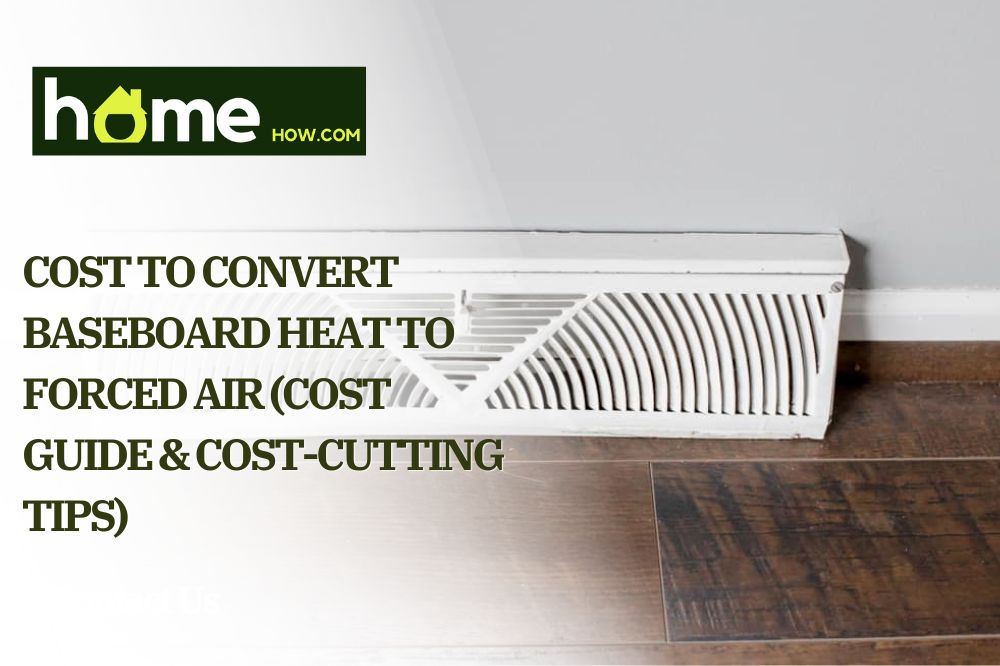Is your home getting harder and harder to heat? Are you frustrated by rising energy bills? And despite your best efforts, there’s still cold air in your rooms?
Especially if you have an older system like baseboard heating, it might be time to upgrade your heating system to something better and more efficient.
Forced air is a popular upgrade – for many reasons. But it comes with some high costs that you, as a homeowner, need to consider.
This article will explore everything you need to know about the price of converting a baseboard heating system to forced air.
We’ll also share expert tips on you can help reduce the price, netting you significant savings, so you can finally upgrade your heating without breaking the bank!
Firstly, what is forced air heating?
A forced air heating system works by distributing warm air in your home through a series of vents and ducts. Air is drawn from the outside and travels across a heat source, like a furnace, resulting in warm air.
There are many core benefits to using forced air as a heating system, including lower energy bills, superior heat distribution, and temperature control.
That said, one of the most significant drawbacks is cost.
How much does it cost to convert to a forced air system?
On average, you’re looking at spending between $3,900-$7,500 to install a forced air system into your home. This is a ballpark figure and is by no means what your final cost can be!
Some influencing factors that can increase the cost of your conversion project include the following:
1. The size of your home
One of the deciding factors for any home project is the size. It stands to reason that the bigger your home, and the bigger the rooms, the more elaborate your heating system needs to be.
Sadly, baseboard heating systems don’t have any ductwork or ventilation you can repurpose for your new system. You will need to do a clean install for each area.
And if you’re renovating an older home, it may not be able to support ducts and ventilation without extensive building work throughout. Some laborers will also charge you by the amount of duct laid or their hours spent working in your home.
It’s often a good idea to hire a specialist to conduct a pre-evaluation of your home to see if it is a suitable structure for the conversion. This usually costs about $250.
2. Labor costs
Larger jobs also require more labor hours, added to the cost of hiring your
A basic installation of an HVAC system can take between five to ten hours – more if there are complicated rooms or if the specialist is also removing the baseboard heaters. HVAC technicians are known to charge $75-$150 per hour.
You can do several things to reduce labor costs to prepare your home—one of the most straightforward and effective things is removing the electric baseboard heaters beforehand. Specialists can charge as much as $100 per heater removed and disposed of, which we think you’ll agree can quickly add up at the end of the day.
Another preparation you can make is cleaning your home. Remove any mold, dirt, debris, or furniture that can get in the way of operations. Map out your electrical wiring in walls, ceilings, and flooring to save your HVAC technician some time, and do any repair work required for supporting walls and beams.

3. Type of forced-air heating furnace
Another primary consideration is the type the furnace you are looking to install. Unlike central heating, which uses a boiler, forced air requires a high-spec boiler.
Below are three options you have when deciding on the type of heat furnace:
- Electrical furnace
This furnace uses heat coils and a blower fan to heat air and evenly distribute it throughout your ducts. The average cost ranges between $2600-$6,400,
One of the biggest considerations with electrical furnaces is powering them. They may require an electrician to reroute wires and correct the voltage to the furnace. Although an effective thermostat is usually installed, electrical furnaces can be costly and may increase your monthly power bills.
That said, electric heating can be one of the quietest types on the market, allowing you to place it and not even notice it while it is on.
- Gas furnace
This works by burning either natural gas or propane in the furnace burner. The heat produced passes through a heat exchanger, circulating hot air around your home.
Advantages of gas include heating up quickly and reaching higher temperatures than rival furnaces. It’s an ideal choice for homes in colder climates. People also report that the warmth created feels more “natural” than other sources.
That said, natural gas can pose a risk of carbon monoxide and will require regular maintenance and servicing to stay in a good, safe condition.
The cost of installation is slightly higher than an electrical furnace, ranging from $3,800 to $10,000. While this might be a more expensive heating option initially, natural gas is often more affordable, netting you significant savings throughout an extended period.
- Oil furnace
Arguably the most expensive furnace to install is an oil-based one, which can easily cost upwards of $6750 to $10,000 or more.
It works by heating oil that is stored in a nearby tank. The heat generated passes through a heat exchanger, creating warm air. This warm air is then pushed through a heating system using fans.
Oil furnaces can last over 20 years when treated well and regularly maintained. They are more expensive to install and run, with oil being a pretty costly fuel choice. You may also need to change their filter periodically.
The core benefit of oil over gas is that oil furnaces are generally much safer, as there’s no risk of carbon monoxide poisoning.

4. Air-conditioners and humidifiers
Because they’re not used simultaneously, you can combine forced air furnaces with AC units and humidifiers to provide complete temperature control for your home throughout the warm summer and cold winter months.
These, of course, will add a hefty premium to your job.
- An AC unit can cost a couple of thousand dollars, depending on what other ducts and ventilation are required.
- A humidifier costs between $395 and $734for a humidifier.
Our cost-cutting tips
If installing a labyrinth of ducts, pipes, and vents feels impossible or is too expensive, there are ways to cut corners and reap the benefits of either a forced or central heating system cheaply.
1. Electric heat pump
An air-to-air heat pump pulls heat from outside your home and redistributes it around your home. It is not only very cheap and easy to install, but it also takes up a minuscule amount of space and is known to help reduce energy bills.
Heat pumps cost much less to install, with smaller pumps ranging from $2,500 and bigger models at $10,000. This gives you a lot more wiggle room in terms of your budget.
2. Ductless mini-splits
Unlike a small heat pump, a ductless mini-split is installed in various rooms to heat and cool your home. Each is connected to an outside unit through walls, making them non-intrusive and generally easier to install.
3. High-velocity system
A high-velocity system is similar to a forced area system, but instead of thick ventilation and ducts, it uses small, thin tubing to carry heat around your home. This systems vent’s are also incredibly tiny, on average measuring just 5 inches wide, making it much easier to install and retrofit in older houses.
A high-velocity handler sends hot and cool air rapidly throughout the system, allowing you to control and adjust the temperature of a room quite quickly.
4. Shop around and plan off-season
Sometimes, the best way to reduce the overall cost of your conversion from baseboard heat to forced air is to shop around. Research the types of furnaces, get quotes from several stores and installers, and wait.
Generally speaking, the fall and spring months are ideal times to get the work done because not many people will use their heating systems. Contractors may reduce their installation costs to attract consistent business.
5. Energy rebates
Many government initiatives and policies try o encourage more energy efficiency in our homes. And sometimes, it can be possible to reclaim some of your expenditure through tax credits and grants.

Conclusion
For many homeowners, replacing their baseboard heaters with a forced air system makes a lot of sense. Not only can it provide more comfort and natural-feeling heat, but it can also help reduce energy bills in the long term.
The only downside to the significant upgrade is the initial installation costs you must pay. In this article, we’ve explored all the different influencing factors that cause your price to rise.
Preparing your home for the HVAC technician ahead of time can help reduce labor costs. And choosing a smaller furnace and AC can reduce costs but still provide an upgraded service.
Ultimately, we think that the benefits of making the change far outweigh the cost you will incur.
If you still have questions about the cost of converting your baseboard heating system to forced air or want to share your own experiences, please comment!
Remember:
- Installing a new forced air system into your home can cost between $3,900-$7,500.
- There are three furnaces to choose from, each with its benefits; electrical, natural gas, and oil.
- A forced air system’s furnace can last up to 20 years with proper maintenance and servicing.
